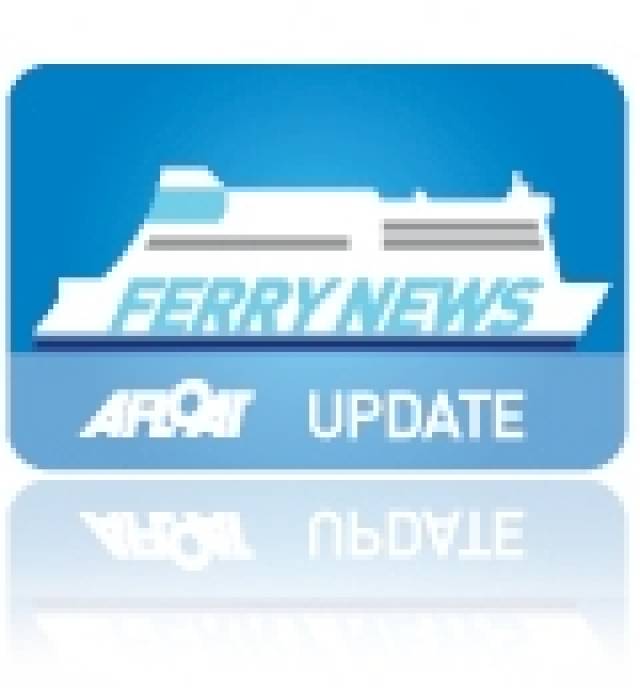#FERRY DEPARTS FOR INDONESIA – An end of an era was marked this afternoon with the departure of the last passenger ship (including 'Sealink' car-ferry) built by Harland & Wolff, when Portlink, slipped down Belfast Lough, for the last time, for new owners in South East Asia, writes Jehan Ashmore.
Since November the ferry then named Stena Caledonia was withdrwan from Stena Line's Belfast-Stranraer route following the opening of a new €80m ferry terminal at Loch Ryan Port close to Cairnryan. The new route is also operated by a pair of larger, newer 'Superfast' sisterships built in 2001, while the older ferry embarks on a career with PT ASDP Indonesia Ferry (Persero).
Originally Stena Caledonia started her career as the St. David, which was launched in 1981 as the final member of a quartet of 'Saint' class near sisterships for Sealink/ British Rail. With her sale to overseas owners, she was the last of the Saint class still operating in UK waters.
Before today's start of the delivery voyage which includes a port of call to Gibraltar, invariably to call for bunkers, the 31 year-old veteran vessel, had been berthed close to the H&W's Musgrave yard. The St. David became the last vessel launched from that particular yard at the Queens Island complex. Incidentally she would also become the last ever passenger ship built at H&W.
For over the last two decades Stena Caledonia has provided a sterling service operating on the North Channel, firstly from Larne-Stranraer when Sealink was taken over by Stena Line in 1990 and then the route switched several years later to the Belfast-Stranraer route.
While in her earlier career as St. David she operated on two routes she was purpose built for between Dun Laoghaire-Holyhead and Rosslare-Fishguard, though she rarely served on the St. Georges service.
Instead she was deployed mostly on the Dun Laoghaire-Holyhead route alongside St. Columba, where these vessels featured a stern-bridge. The stern-bridge in itself also reflected an end of an era in ferry design, this was to facilitate easier and safer access while navigating the tighter confines of the inner harbour of the Welsh port located on Holy Island.
In between her early and final years on the Irish Sea, St. David also ran on routes from Dover where Sealink /British Rail operated their 'Blue' Ribbon service to Calais maintained by two of her three sisters.






























































